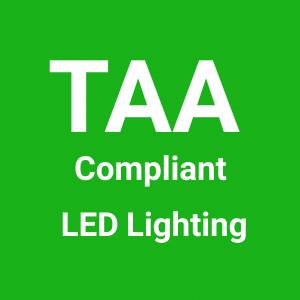- 80 reads

As concerns over the coronavirus increase and the US government is increasingly requiring Trade Agreements Act (TAA) or Buy American Act (BAA) compliant lighting products, the information below will provide some clarity.
Here is a list of TAA countries:
Taiwan and South Korea (called The Republic of Korea) are on the list as well as Israel, but Vietnam is not on the list:
https://www.cablestogo.com/learning/library/standards-specs-certs/taa-countries-list
Charlie Szoradi, Chairman of the Leadership Council of the American LED Alliance (https://americanledalliance.com/baa-compliant-led-lighting-2/)
wrote, "The Buy American Act (BAA) is more clear than TAA in many ways when it comes to compliance. My understanding of TAA relative to lighting is that if all the components come in from a non TAA country, such as China, and they are just assembled in the US or a TAA country, without substantial transformation, or without an assembly cost that is 50 percent or more of the total product cost, then the product does not meet TAA compliance. To meet TAA, for a light bulb or fixture, the assembly labor could be 50 percent or more of the cost that is charged from the manufacturer to the wholesale buyer, who then sells it to the US or other customers. To meet the TAA substantial transformation option, a component like a lense would need to be molded in the TAA country where the source material plastic is transformed into the shape of the lens. For TAA, you need to meet one of these two:
1: 50 percent of the cost of manufacture or
2: location where product is “substantially transformed"
TAA compliance:
https://www.coleygsa.com/taa-designated-countries/
TAA refers to the Trade Agreements Act (19 U.S.C. & 2501-2581), which is intended to foster fair and open international trade. TAA requires that the U.S. Government may acquire only “U.S. – made or designated country end products." This act requires that contractors must certify that each end product meets the applicable requirements.
What is TAA Compliance?
(Updated: June 2019 )
How do you know if you are TAA Compliant? TAA refers to the Trade Agreement Act. Under 19 USC 2501 Trade Agreements Act government agencies may only purchase US-made or designated country end products or US or designated country services.
Are Your Products on GSA Schedule TAA Compliant?
Because the estimated value of a GSA schedule exceeds $191,000, all GSA product sales must be Trade Agreement Act (TAA) compliant, as per FAR 52.225-5. In order to be TAA compliant, Customs and Border Protection (CBP) considers either that 50 percent of the cost of manufacture or location where product is “substantially transformed” is from/within a TAA Designated Country.
If you offer services through your GSA Schedule, the TAA may also apply to you; but that is not always the case. The issue of how the TAA applies to services is a complex one.
How to Determine if products were “Substantially Transformed?”
If a product is completely manufactured in the United States or in a TAA designated country, you are TAA compliant. Software country of origin is determined in the country where the software was compiled.
Sometimes a product requires assembly in several countries or has components from various countries; the TAA compliance becomes murkier and a determination of where the product is substantially transformed is required. If a product is manufactured in various countries, the final product must be “substantially transformed” in a designated country. Substantial transformation would be transforming an article into a new and different article of commerce, with a name, character, or use distinct from the original article. (refer to FAR 25.001(c))
Responsibility falls wholly on the government contractor, to determine if a product has been substantially transformed. More information on International Trade: Rules of Origin available here: http://www.fas.org/sgp/crs/row/RL34524.pdf.
Who Makes the Determination of TAA Compliance?
The U.S. Customs and Border Protection states that “the responsibility for making a determination of substantial transformation rests solely with the contractor. The contractor can go to The Office of Regulations and Rulings within U.S. Customs and Border Protection, which is the Federal agency responsible for making substantial transformation determinations or giving their opinions.”
How to Keep Your GSA Schedule TAA Compliant?
First you must have a system in place that periodically verifies that the products being offered under your GSA schedule are TAA compliant. Furthermore, if you are not a manufacturer, we recommend that you verify countries of origin quarterly or, at minimum, with catalog updates from your suppliers to verify that products are still being manufactured or “substantially transformed” in a TAA designated country.
If your manufacturing source changes during the term of your contract and items are now manufactured in a non-designated country, your products will consequently be out of compliance. You must immediately take action to remove the non-TAA compliant items from your GSA Schedule. A GSA consultant from the Coley team can assist with getting this processed.
TAA Designated Countries are regularly updated and can be accessed from here: FAR-Clause-52.225-5. Also, as noted on our table below, if a product is manufactured in China, Indonesia, Malaysia, or Sri Lanka, you may be permitted to sell them, but only to the VA with a required waiver. Territories belonging to the United States, are TAA compliant therefore, American Samoa, Northern Mariana Islands, Puerto Rico, and the United States Virgin Islands are compliant countries.
Here is an example of a product line for Buy American Act LED Lighting: https://independenceled.com/baa-compliant-led-lighting/

